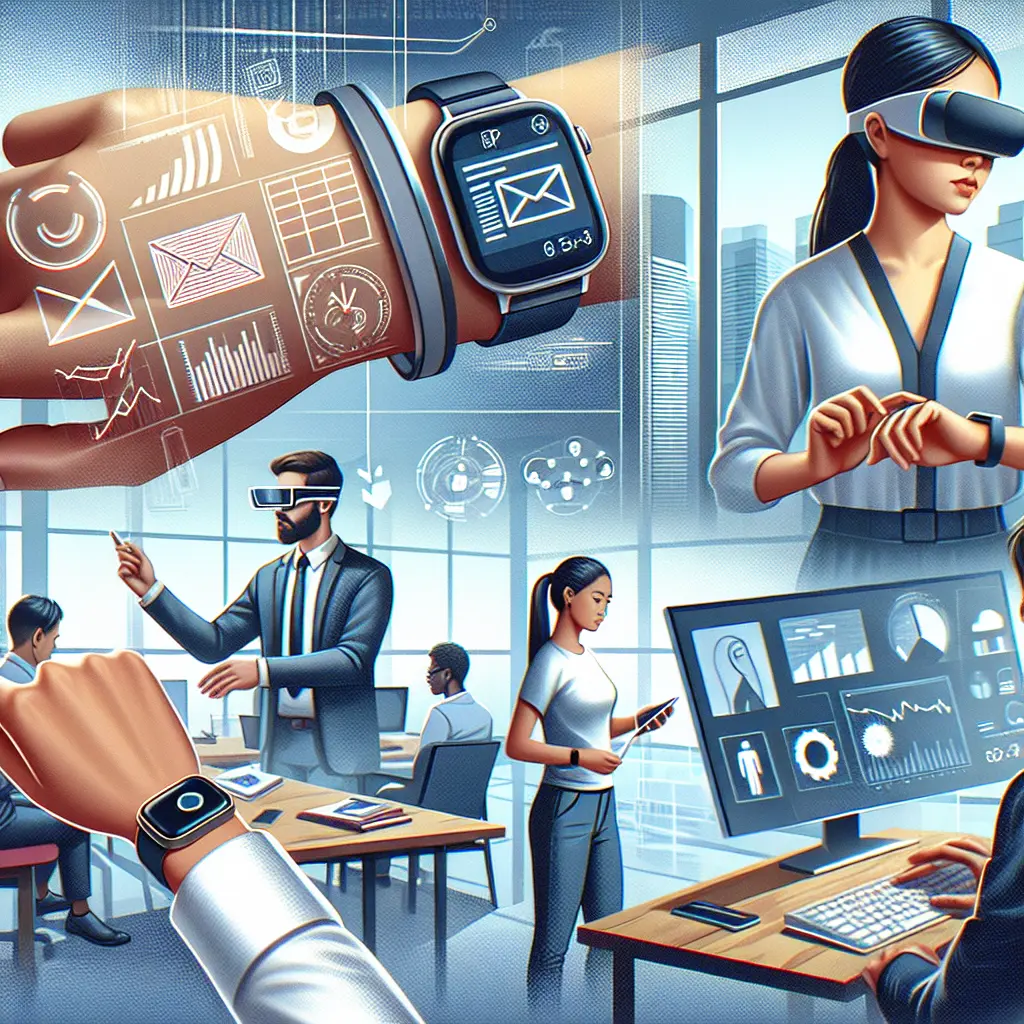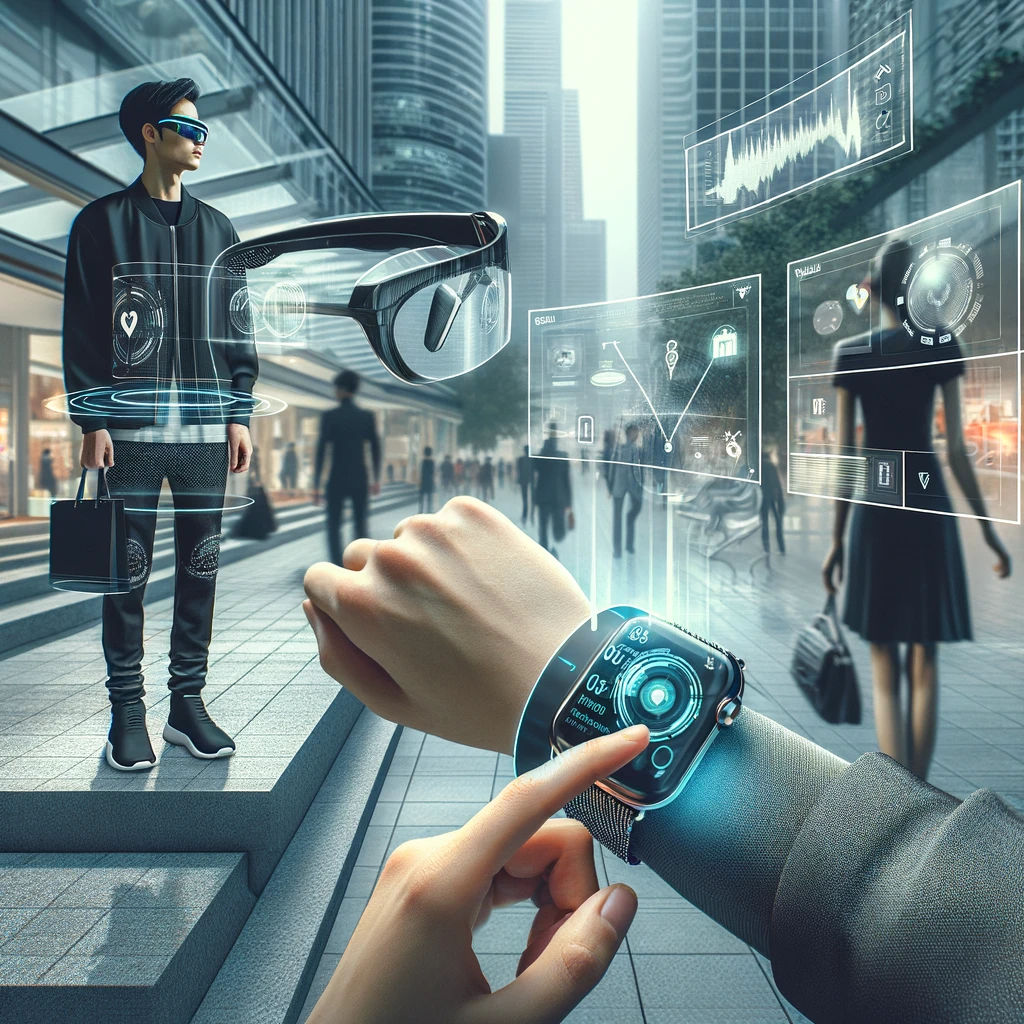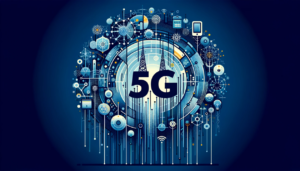
In recent years, wearable technology has transcended its origins as a niche market for tech enthusiasts, evolving into a mainstream phenomenon that is fundamentally reshaping our interaction with the digital world. From smartwatches to fitness trackers, the latest innovations in wearable technology are enhancing our lives in ways once imagined only in science fiction. As we delve into the cutting-edge developments driving this industry, we’ll explore how these innovations are transforming health, fitness, communication, and beyond.

1. Advanced Health Monitoring
1.1} Continuous Glucose Monitoring (CGM)
One of the most groundbreaking advancements in wearable technology is the development of continuous glucose monitoring systems. Traditionally, diabetics relied on periodic finger-prick tests to monitor their blood sugar levels. Today, wearable CGM devices, like those from Dexcom and Abbott, provide real-time glucose readings via sensors placed under the skin. These devices offer alerts for blood sugar spikes or drops, enabling more precise management of diabetes and reducing the need for frequent finger pricks.
1.2} Advanced Heart Health Wearables
Wearable ECG (electrocardiogram) monitors have come a long way. Devices such as the Apple Watch Series 8 and the Fitbit Sense offer advanced heart monitoring features, including irregular heart rhythm detection and comprehensive ECG readings. These innovations have the potential to detect conditions like atrial fibrillation (AFib) early, allowing users to seek medical advice before more serious issues arise.
1.3} Body Temperature Regulation
Wearables are also advancing in the realm of body temperature regulation. The Embr Wave bracelet, for instance, uses thermal sensations to help users feel warmer or cooler depending on their environment. This technology not only enhances comfort but also aids in managing conditions related to temperature sensitivity.
2. Enhanced Fitness Tracking
2.1} Precision Activity Tracking
Wearable fitness trackers have become increasingly sophisticated in tracking physical activities. Devices like the WHOOP Strap 4.0 and Garmin Venu 3 now offer metrics such as heart rate variability, sleep quality, and recovery status. These trackers use advanced algorithms and sensors to provide users with a more comprehensive understanding of their fitness levels and overall well-being.
2.2} Smart Clothing
Smart clothing is another exciting frontier in wearable technology. Companies like Athos and Hexoskin have developed apparel embedded with sensors that monitor muscle activity, heart rate, and breathing patterns. This data can be used to optimize workouts, prevent injuries, and track performance improvements over time.
3. Augmented Reality (AR) and Virtual Reality (VR) Integration
3.1} AR Glasses
Augmented Reality glasses, such as the Vuzix Blade and the Google Glass Enterprise Edition, are redefining how we interact with digital information. These glasses overlay digital information onto the real world, enabling hands-free access to notifications, navigation, and even real-time language translation. The integration of AR technology into everyday wearables promises to enhance productivity and offer new ways to experience media.
3.2} VR Headsets
On the virtual reality front, devices like the Meta Quest Pro and the HTC Vive XR Elite are pushing the boundaries of immersive experiences. These headsets offer high-resolution displays, advanced tracking, and powerful processing capabilities, providing users with immersive gaming, educational, and professional environments. As VR technology continues to evolve, we can expect even more sophisticated and comfortable wearables that blur the lines between the virtual and real worlds.
4. Enhanced Connectivity and Integration
4.1} Seamless Integration with IoT
The Internet of Things (IoT) has paved the way for more interconnected wearable devices. Modern wearables are increasingly capable of interacting with other smart devices in a user’s environment. For example, smartwatches can now control smart home devices, such as lights and thermostats, directly from the wrist. This level of integration enhances convenience and streamlines the user experience.
4.2} Improved Data Security and Privacy
As wearable technology becomes more advanced, the importance of data security and privacy grows. Innovations in encryption and secure data storage are critical to protecting sensitive health and personal information. Companies are investing in advanced security measures, such as biometric authentication and blockchain technology, to ensure that users’ data remains safe and private.
5. Fashion Meets Functionality
5.1} Stylish Wearable Tech
Gone are the days when wearable technology was purely functional and lacked aesthetic appeal. Today, there is a growing trend of blending fashion with functionality. Smartwatches and fitness trackers are available in a variety of designs, materials, and colors, making them not only useful but also stylish accessories. Companies like Garmin and Fitbit offer customizable bands and faces, allowing users to match their wearables with their personal style.
5.2} Customizable Wearables
The customization of wearables is not limited to their appearance. Advances in technology now allow users to tailor the functionality of their devices to suit their specific needs. For instance, some smartwatches allow users to download custom apps and widgets, enabling them to personalize their device’s capabilities and interface.
6. Future Trends and Innovations
6.1} Biometric Monitoring Beyond Basics
Looking ahead, the future of wearable technology promises even more advanced biometric monitoring. Research is underway into wearables that can monitor blood pressure, detect dehydration, and analyze sweat composition. These innovations could provide a more complete picture of an individual’s health and potentially revolutionize preventive care.
6.2} Haptic Feedback and Sensory Experiences
Emerging technologies are exploring the integration of haptic feedback into wearables. This involves the use of vibrations and other tactile sensations to enhance user interaction and experience. For example, future smartwatches and VR gloves may use haptic feedback to simulate touch, providing a more immersive and interactive experience.
Conclusion
The latest innovations in wearable technology are pushing the boundaries of what is possible, offering new levels of health monitoring, fitness tracking, connectivity, and personal expression. As these technologies continue to advance, they hold the promise of transforming our daily lives in profound ways.
From enhanced health management to immersive virtual experiences, wearables are becoming an integral part of how we live, work, and play. As we look to the future, it’s clear that wearable technology will continue to be a driving force in shaping our digital and physical worlds.







